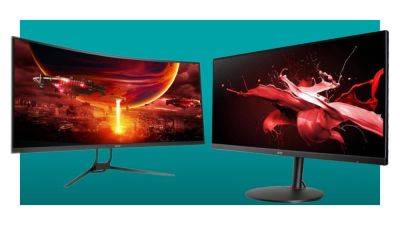The latest HDR standards for PC monitors are still a bit of a kludge
The display standards body VESA has rolled out a new 1.2 spec for its DisplayHDR certification regime. The revised Version 1.2 standards add a range of new requirements, but the bottom line is that most so-called HDR-certified monitors still won't actually be HDR capable.
In theory, VESA is slightly raising the bar for what it takes to qualify as an HDR PC monitor. VESA has added requirements for colour fidelity and static contrast, for instance, particularly to the lower tier certification levels. However, the standards still allow for things like monolithic backlighting on LCD panels, which are not the stuff of true HDR performance.
More specifically, the previous DisplayHDR 400 1.1 definition had no requirement for static contrast or DCI-P3 gamut coverage. The new 1.2 version dictates a minimum of 1,300:1 for static contrast and 90% for DCI-P3 coverage.
The former is basically what any half-decent IPS panel will achieve, ditto the 90% DCI-P3. Neither raise the bar much in practice and likewise neither come close to ensuring actual HDR capability.
There are some further tweaks to the definition around colour accuracy including minimum 8-bit colour, but ultimately a version 1.2 DisplayHDR 400 monitor will still have a monolithic backlight, a peak brightness of around 400 nits and poor black levels. It won't be a true HDR display by any sensible definition of the term «HDR».
Further up the stack, things do get a little more interesting. For instance, the DisplayHDR 600 definition requires a static contrast of 8,000:1. That's far in excess of what any existing LCD panel we know of can achieve. The HDR 1000 tier takes that even higher, with a 30,000:1 requirement. However, HDR 1000 also requires full-array local dimming, enabling that higher contrast.
HDR 600 panels are not required to have full-array dimming, only a few edge-lit zones, so it's not clear what 8,000:1 really means. Given it can't be achieved by the LCD panel itself, it must involve the edge-lit zones,







